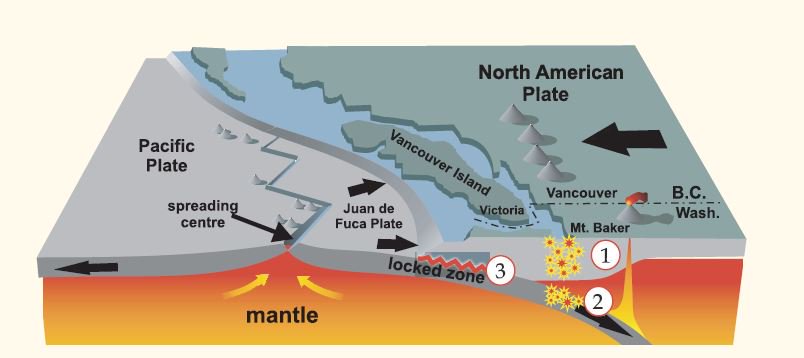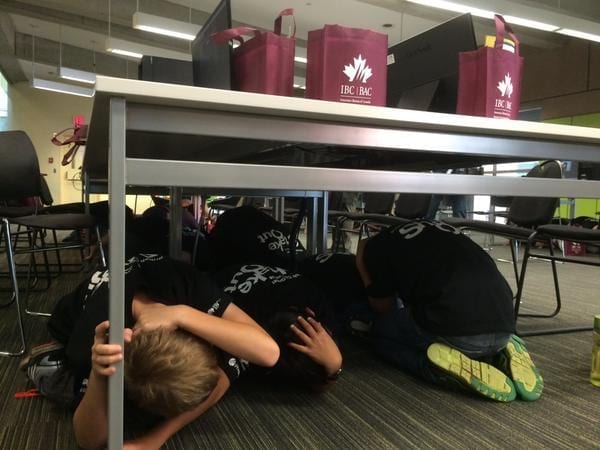ShakeOut Day returned for another year on the third Thursday of October – this year, October 15 – to remind people about earthquake safety.
In the Victoria area, municipalities encouraged the public to participate by signing up for reminders and information at shakeoutbc.ca, while also offering information of their own.
“Victoria has a one-in-three probability of a damaging earthquake in the next 50 years – and we need to be prepared,” the City of Victoria wrote in a release.
The City posted information on emergency preparedness, including tips on assembling a kit, on their website.
District of Saanich staff were set to participate at 10:15 a.m. “drop cover and hold” drills, and also posted information on earthquakes to the District website.
“What we have experienced with COVID-19 has highlighted the importance of being prepared now more than ever,” said Frank Macdonald, Saanich Fire Department Deputy Fire Chief.
“The ShakeOut drill can be completed wherever you are on October 15 and is a great way to practise your preparedness while maintaining physical distancing.”
The science behind earthquakes
Dr. John Cassidy, Head of the Earthquake Seismology Section at Natural Resources Canada and an adjunct professor at UVic, says the drills are very important for raising awareness and can save lives.
“The greatest danger is from non-structural damage – items flying around, cabinets falling over, fridges,” said Cassidy in an interview with Victoria Buzz.
“It’s not so much a building a collapsing. Things falling…That really is the danger, the most common type of impact. That’s what we’re trying to minimize with this exercise.”
Cassidy says that earthquakes can cause household and workplace items to fly through the air with more force than just gravity. He says that’s why ShakeOut’s instructions stress “holding on” to a protective surface.
In the event of an earthquake, you should drop to the ground, take cover by getting under a sturdy desk, table, or another solid surface, and hold on to it to prevent it from moving away from you.
There are three main types of earthquakes that can impact Vancouver Island: subduction zone earthquakes, crustal earthquakes, and deep earthquakes. Subduction zone earthquakes are the most severe but are also much more infrequent.
The Island rests over the Juan de Fuca tectonic plate, which is being pushed towards North America by undersea volcanic activity.

“Plates are moving at about the same speed your fingernails grow,” said Cassidy. “It’s that movement that ultimately produces the earthquakes.”
As the Juan de Fuca plate presses against the continent, the risk of a subduction zone earthquake increases. When the plate finally “pops” under the continent, a massive quake will occur.
However, Cassidy said this is a very rare event.
“We know that the last one was January 26, 1700; that comes from Japan where there were written documents of a tsunami,” he said.
“That fits with Indigenous oral traditions [in Canada] that describe a village disappearing, and shaking that continued for a long time.”
Deep earthquakes are more frequent, such as the 2001 quake that caused $2 billion worth of damage in Seattle.
Cassidy says those types of quakes are caused by differences in composition and density in rock and magma along the bottom of the tectonic plate, and occur about 50 to 70 kilometres below the surface.
Shaking from deep earthquakes is reduced on the surface by the distance the shockwave has to travel, but can still cause major damage, injury, and even death.
Cassidy also says that aftershocks from particularly large earthquakes, like the 2011 earthquake in Christchurch, New Zealand, can last for months or even over a year.
He says practicing drills and safety tips, like keeping a flashlight in the house and slippers on hand for walking through broken glass and other debris, can prevent injury and save lives.
“We know that the more people are prepared, the more lives will be saved,” said Cassidy. “Spreading the message is so important.”



